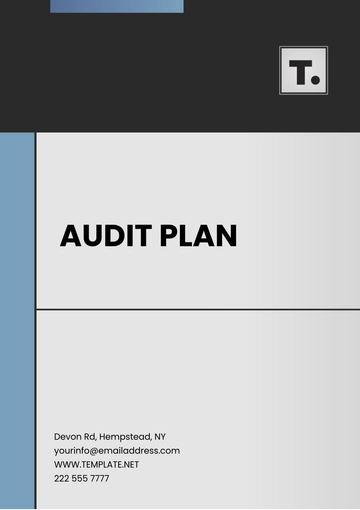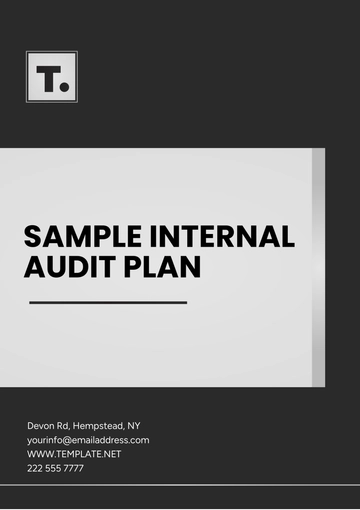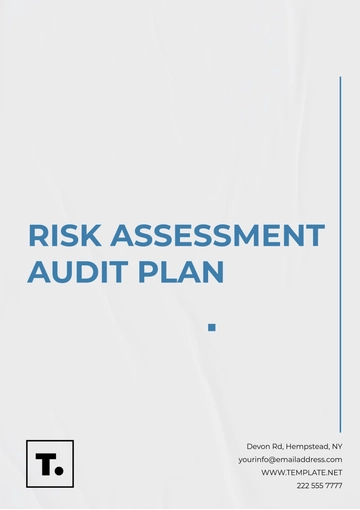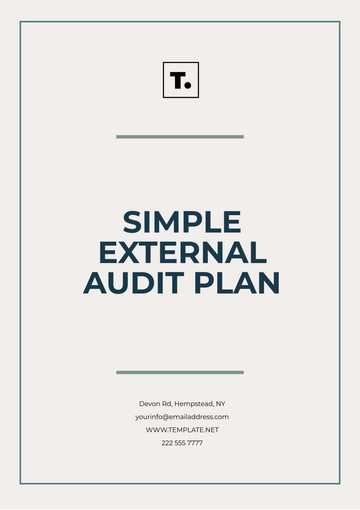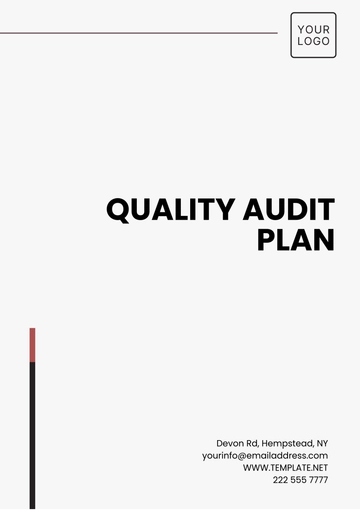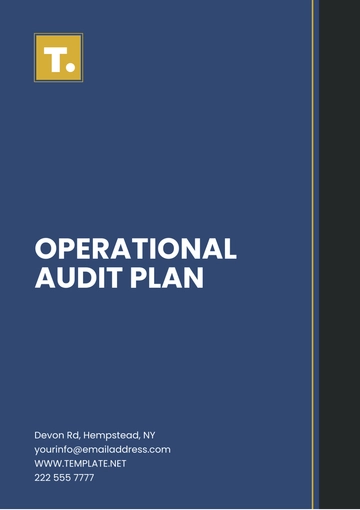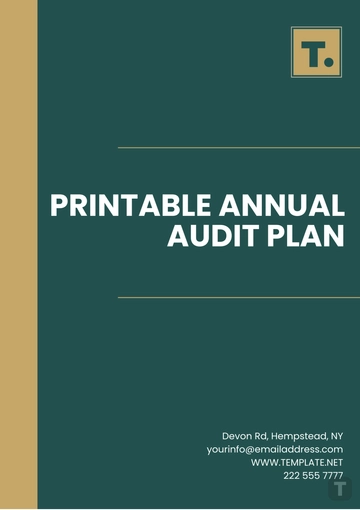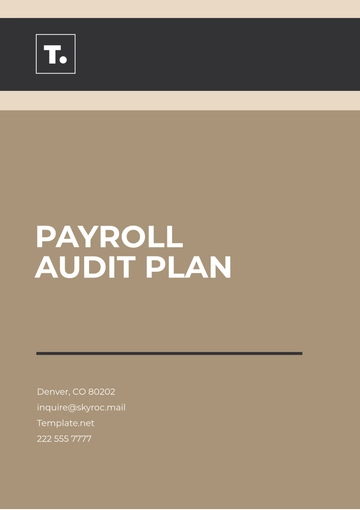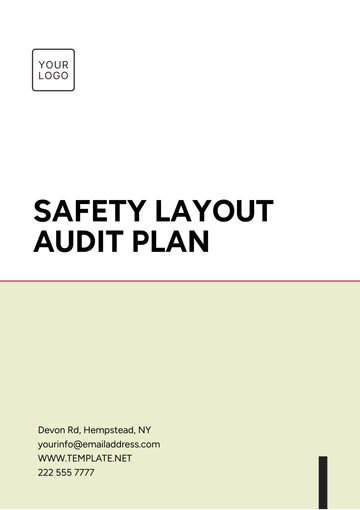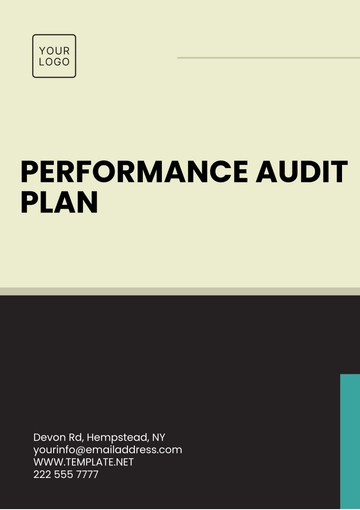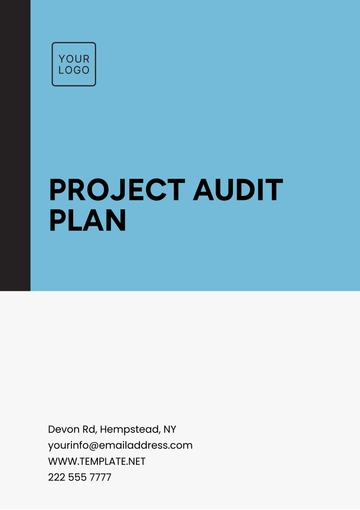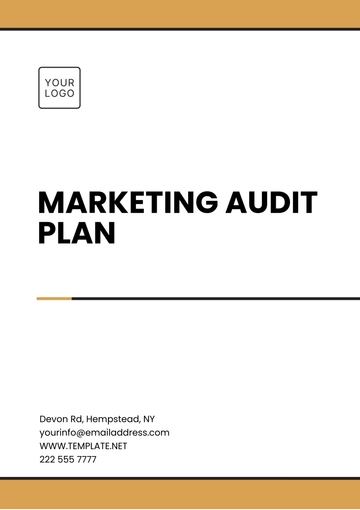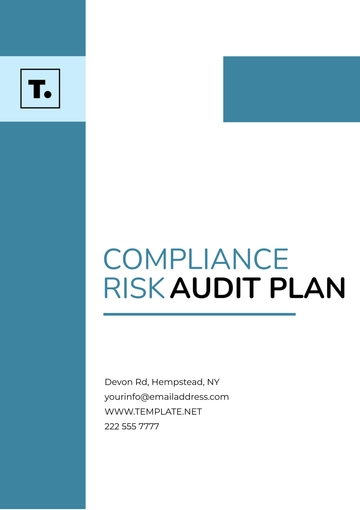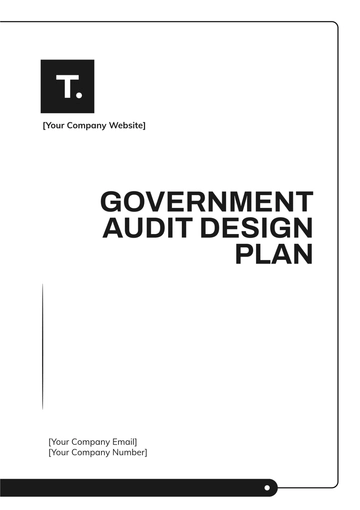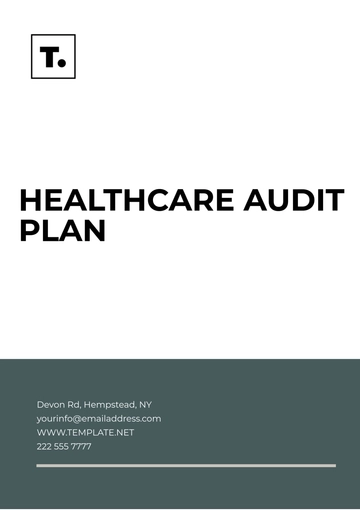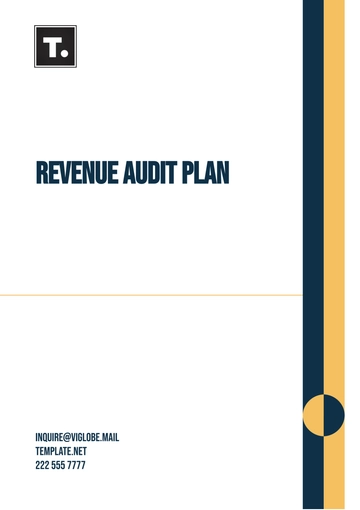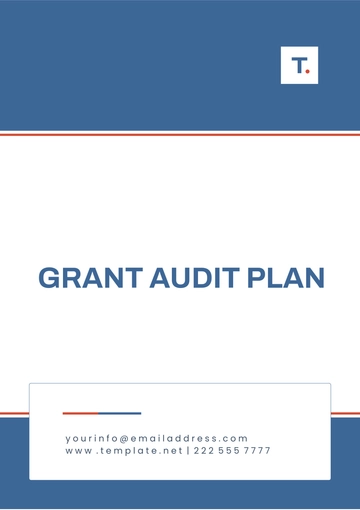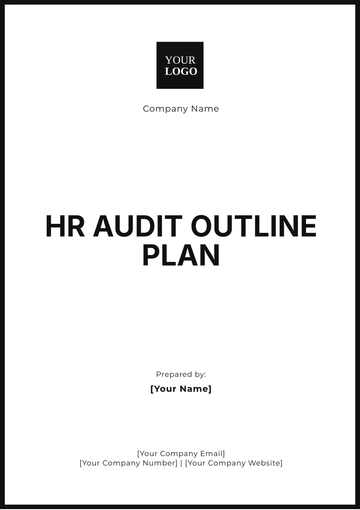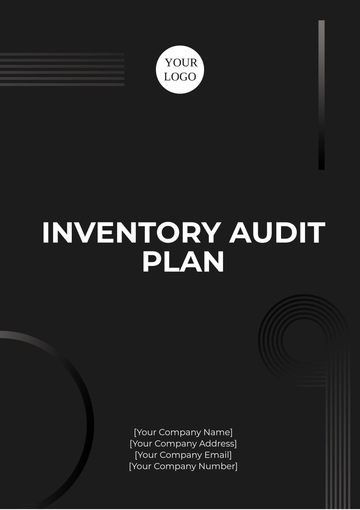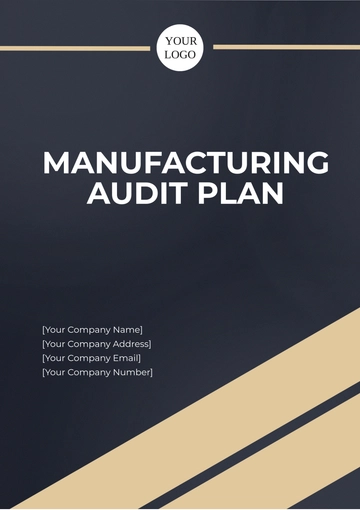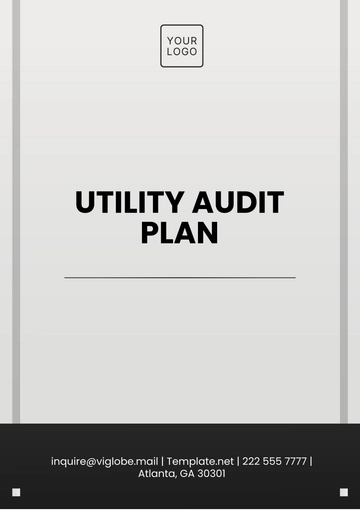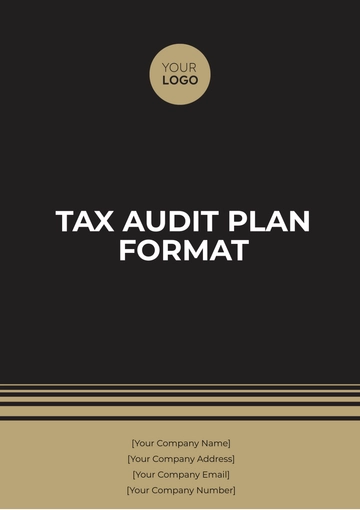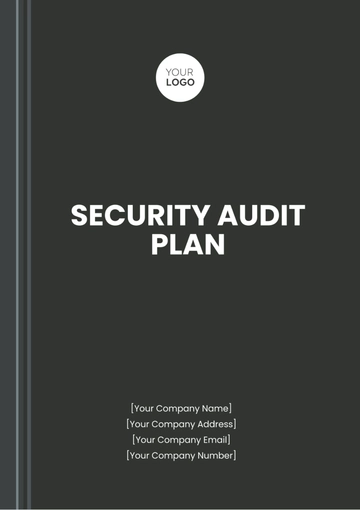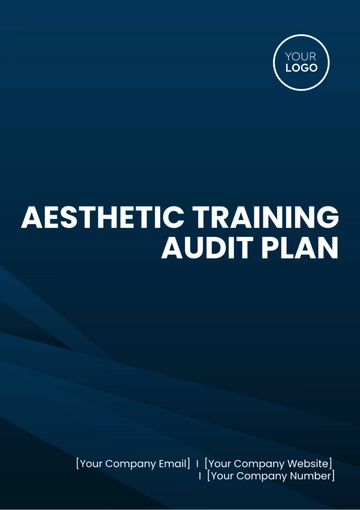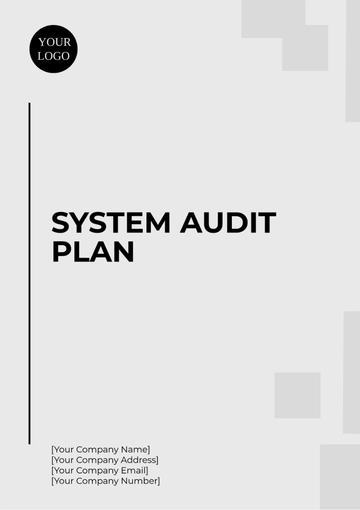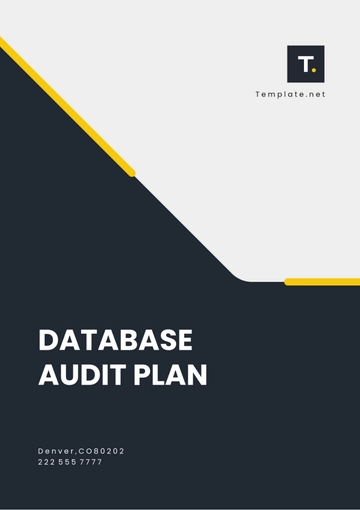Free Risk Assessment Audit Plan
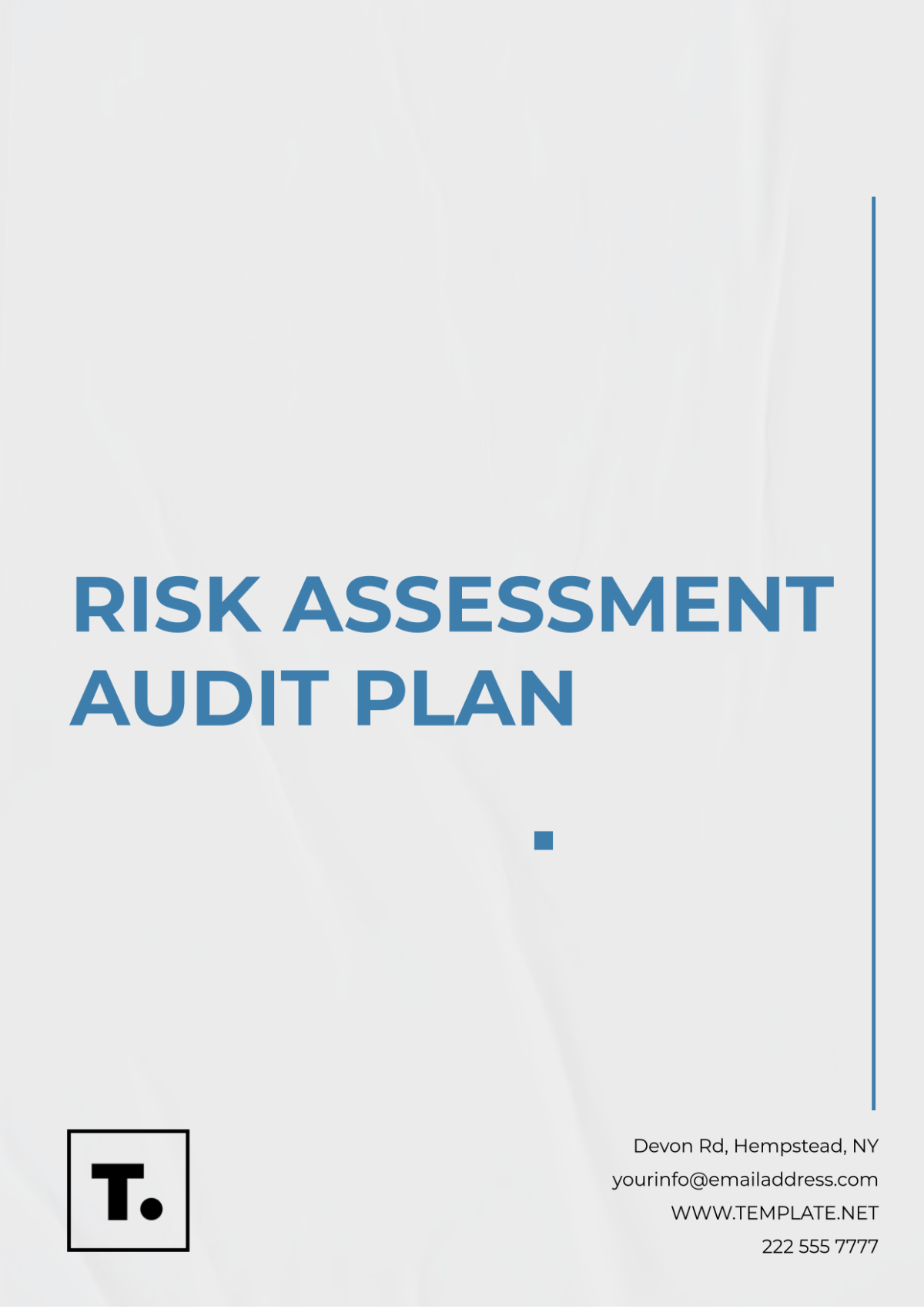
Date: January 2, 2060
Prepared by: [Your Name], Chief Audit Executive
Department: Internal Audit Department
Company: [Your Company Name]
1. Introduction
This Risk Assessment Audit Plan outlines the comprehensive strategy for assessing risks across [Your Company Name] for the fiscal year 2060. The purpose of this plan is to systematically identify, evaluate, and mitigate potential risks that could impact the company’s financial standing, operations, reputation, and compliance with regulatory requirements.
By prioritizing areas with the highest risk, this plan ensures that resources are allocated efficiently to safeguard the company’s assets and foster a culture of continuous improvement. All findings will guide the development of corrective measures and ensure that risk management protocols are fully implemented across all departments.
2. Objectives of the Audit
The objectives of this Risk Assessment Audit are as follows:
Risk Identification: Identify potential risks, both internal and external, that could affect the company’s operations, financial stability, or legal compliance.
Risk Evaluation: Assess the likelihood and potential impact of identified risks through data analysis, industry benchmarks, and internal metrics.
Risk Mitigation: Recommend controls and measures to reduce the likelihood and impact of key risks.
Compliance Monitoring: Ensure adherence to relevant laws, regulations, and corporate governance standards.
Resource Allocation: Optimize the allocation of audit resources based on identified high-risk areas.
3. Scope of the Audit
The scope of this audit includes all departments and business units within [Your Company Name]. This encompasses a review of operational processes, financial transactions, information technology systems, human resources practices, and compliance with external regulations. Key focus areas for this audit will include:
Financial Reporting and Integrity: Ensuring the accuracy of financial statements and adherence to accounting standards.
Cybersecurity Risks: Evaluating the company's IT infrastructure, data protection measures, and resilience against cyber threats.
Operational Efficiency: Assessing the effectiveness of processes and the potential for operational disruptions, including supply chain risks.
Regulatory Compliance: Verifying that all business practices comply with local, national, and international regulations.
Health and Safety: Reviewing the company’s adherence to safety protocols to ensure the welfare of employees and compliance with environmental standards.
4. Audit Approach
Our approach will follow a structured methodology, combining qualitative and quantitative analysis, interviews with key personnel, and data from various departments. The following stages will be employed:
Pre-Audit Research (January 2 - March 15, 2060):
Review previous audit reports, industry benchmarks, and internal documentation.
Conduct interviews with department heads to gather insights on perceived risks.
Risk Identification (March 16 - April 30, 2060):
Map out all potential risks using data analytics, risk matrices, and historical performance data.
Identify new and emerging risks in the business landscape.
Risk Evaluation and Scoring (May 1 - June 30, 2060):
Prioritize risks based on their probability and potential impact, assigning each a risk score.
Use risk management frameworks such as COSO and ISO 31000 for guidance.
Control Testing and Mitigation Plans (July 1 - September 30, 2060):
Assess existing controls and their effectiveness in mitigating risks.
Propose improvements or additional controls for high-risk areas.
Reporting and Recommendations (October 1 - December 31, 2060):
Compile findings into an audit report, highlighting key risks, control weaknesses, and recommended action plans.
Present the report to the Audit Committee and Senior Management for review and implementation.
5. Key Risks to be Assessed
Financial Risks:
Risk of financial misstatement or fraud due to weak internal controls.
Risk of economic downturns affecting profitability.
Operational Risks:
Supply chain disruptions caused by global market volatility.
Inefficiencies in production processes lead to cost overruns.
Cybersecurity Risks:
Increasing sophistication of cyberattacks and vulnerabilities within IT infrastructure.
Risks associated with data privacy and regulatory compliance (e.g., GDPR).
Legal and Compliance Risks:
Non-compliance with evolving regulations in key markets.
Potential litigation risks from employee or customer disputes.
Reputational Risks:
Damage to brand reputation from negative public relations events or product recalls.
Social media risks affecting customer perception.
6. Audit Team and Responsibilities
The following team members will be responsible for conducting the audit and executing the risk assessment process:
Audit Lead: John Doe, Chief Audit Executive
Responsible for overseeing the entire audit process, reviewing risk evaluation, and communicating findings to Senior Management.
Audit Manager: Jane Smith, Senior Auditor
In charge of the day-to-day management of the audit, coordinating with different departments, and managing audit timelines.
IT Auditor: Michael Brown, Cybersecurity Specialist
Responsible for evaluating IT and cybersecurity risks, testing digital controls, and providing recommendations for strengthening data security.
Financial Auditor: Sarah Johnson, Financial Audit Specialist
Conducts a detailed review of financial statements, internal controls, and compliance with accounting standards.
7. Timeline
Pre-Audit Research: January 2 - March 15, 2060
Risk Identification: March 16 - April 30, 2060
Risk Evaluation and Scoring: May 1 - June 30, 2060
Control Testing and Mitigation Plans: July 1 - September 30, 2060
Reporting and Recommendations: October 1 - December 31, 2060
8. Audit Reporting and Follow-Up
After the audit, a detailed report will be presented to the Audit Committee. This report will include an executive summary of identified risks, the effectiveness of existing controls, and recommended action plans to mitigate high-priority risks. A follow-up audit will be scheduled for March 2061 to ensure all recommendations have been implemented effectively.
Approved by:
 [Your Name]
[Your Name]
Chief Audit Executive
- 100% Customizable, free editor
- Access 1 Million+ Templates, photo’s & graphics
- Download or share as a template
- Click and replace photos, graphics, text, backgrounds
- Resize, crop, AI write & more
- Access advanced editor
Manage potential risks with ease using our Risk Assessment Audit Plan Template from Template.net. This fully customizable template is designed to assess and mitigate risks effectively. It’s editable in our Ai Editor Tool, allowing you to tailor the audit plan to your specific needs, helping ensure thorough risk management and assessment.
You may also like
- Finance Plan
- Construction Plan
- Sales Plan
- Development Plan
- Career Plan
- Budget Plan
- HR Plan
- Education Plan
- Transition Plan
- Work Plan
- Training Plan
- Communication Plan
- Operation Plan
- Health And Safety Plan
- Strategy Plan
- Professional Development Plan
- Advertising Plan
- Risk Management Plan
- Restaurant Plan
- School Plan
- Nursing Home Patient Care Plan
- Nursing Care Plan
- Plan Event
- Startup Plan
- Social Media Plan
- Staffing Plan
- Annual Plan
- Content Plan
- Payment Plan
- Implementation Plan
- Hotel Plan
- Workout Plan
- Accounting Plan
- Campaign Plan
- Essay Plan
- 30 60 90 Day Plan
- Research Plan
- Recruitment Plan
- 90 Day Plan
- Quarterly Plan
- Emergency Plan
- 5 Year Plan
- Gym Plan
- Personal Plan
- IT and Software Plan
- Treatment Plan
- Real Estate Plan
- Law Firm Plan
- Healthcare Plan
- Improvement Plan
- Media Plan
- 5 Year Business Plan
- Learning Plan
- Marketing Campaign Plan
- Travel Agency Plan
- Cleaning Services Plan
- Interior Design Plan
- Performance Plan
- PR Plan
- Birth Plan
- Life Plan
- SEO Plan
- Disaster Recovery Plan
- Continuity Plan
- Launch Plan
- Legal Plan
- Behavior Plan
- Performance Improvement Plan
- Salon Plan
- Security Plan
- Security Management Plan
- Employee Development Plan
- Quality Plan
- Service Improvement Plan
- Growth Plan
- Incident Response Plan
- Basketball Plan
- Emergency Action Plan
- Product Launch Plan
- Spa Plan
- Employee Training Plan
- Data Analysis Plan
- Employee Action Plan
- Territory Plan
- Audit Plan
- Classroom Plan
- Activity Plan
- Parenting Plan
- Care Plan
- Project Execution Plan
- Exercise Plan
- Internship Plan
- Software Development Plan
- Continuous Improvement Plan
- Leave Plan
- 90 Day Sales Plan
- Advertising Agency Plan
- Employee Transition Plan
- Smart Action Plan
- Workplace Safety Plan
- Behavior Change Plan
- Contingency Plan
- Continuity of Operations Plan
- Health Plan
- Quality Control Plan
- Self Plan
- Sports Development Plan
- Change Management Plan
- Ecommerce Plan
- Personal Financial Plan
- Process Improvement Plan
- 30-60-90 Day Sales Plan
- Crisis Management Plan
- Engagement Plan
- Execution Plan
- Pandemic Plan
- Quality Assurance Plan
- Service Continuity Plan
- Agile Project Plan
- Fundraising Plan
- Job Transition Plan
- Asset Maintenance Plan
- Maintenance Plan
- Software Test Plan
- Staff Training and Development Plan
- 3 Year Plan
- Brand Activation Plan
- Release Plan
- Resource Plan
- Risk Mitigation Plan
- Teacher Plan
- 30 60 90 Day Plan for New Manager
- Food Safety Plan
- Food Truck Plan
- Hiring Plan
- Quality Management Plan
- Wellness Plan
- Behavior Intervention Plan
- Bonus Plan
- Investment Plan
- Maternity Leave Plan
- Pandemic Response Plan
- Succession Planning
- Coaching Plan
- Configuration Management Plan
- Remote Work Plan
- Self Care Plan
- Teaching Plan
- 100-Day Plan
- HACCP Plan
- Student Plan
- Sustainability Plan
- 30 60 90 Day Plan for Interview
- Access Plan
- Site Specific Safety Plan
